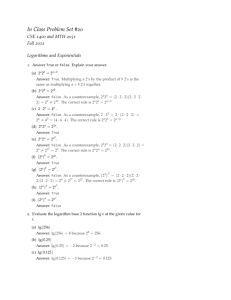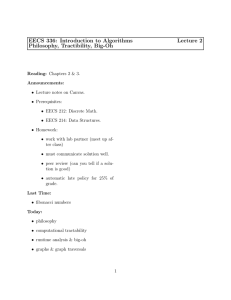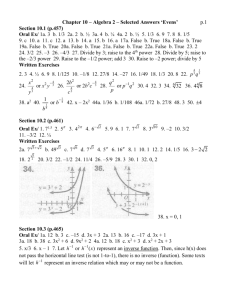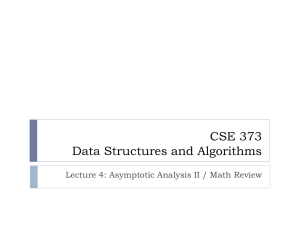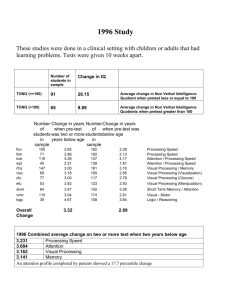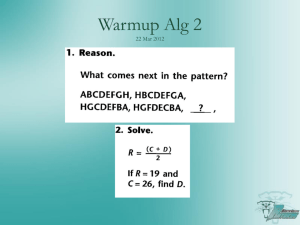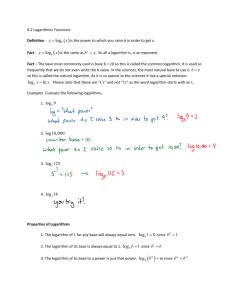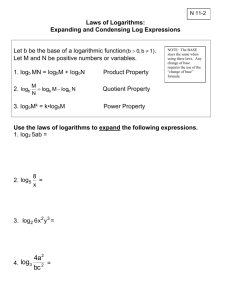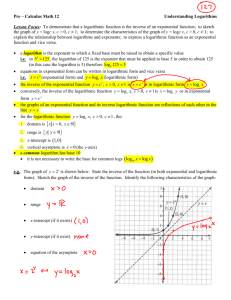Data Structures CSCI 262, Spring 2002 Lecture 2 Classes and
advertisement
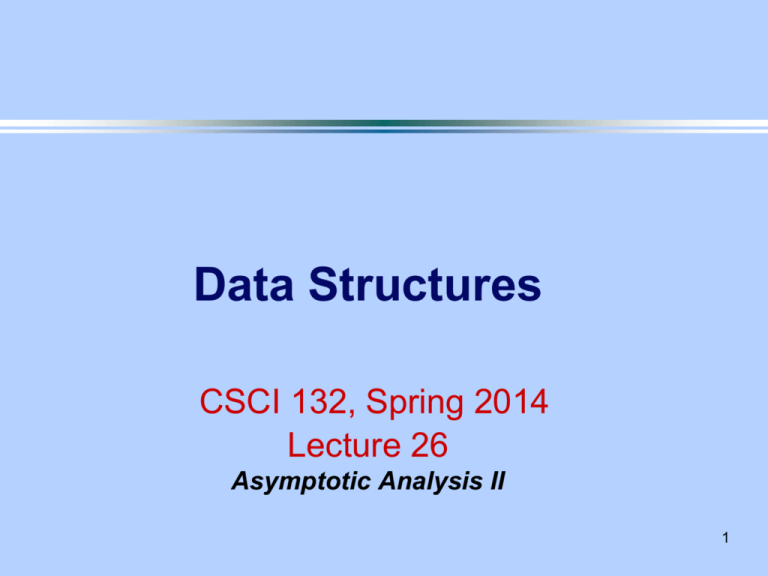
Data Structures CSCI 132, Spring 2014 Lecture 26 Asymptotic Analysis II 1 Big-Oh Notation f(n) is Say: Meaning limn f(n)/g(n) o(g(n)) little-oh of g(n) < 0 O(g(n)) Big-oh of g(n) <= finite Q(g(n)) Big-theta of g(n) = non-zero, finite W(g(n)) Big-omega of g(n) >= non-zero w(g(n)) little-omega of g(n) > infinite 2 Relationships between O,o,Q,W,w is a subset of w (g) W(g) w(g) W(g) bigger growth of f Q(g) smaller growth of f O(g) o(g) o(g) O(g) 3 It follows that: if f = w(g) then f = W(g) if f = o(g) then f = O(g) Symmetric relationships: f = w(g) if and only if g = o(f) f = W(g) if and only if g = O(f) f = Q(g) if and only if g = Q(f) 4 Rules For O-notation •If f(n) is a polynomial of degree r, then f(n) = Q(nr) •If r < s, then nr is o(ns) •If a > 1, b> 1 then loga(n) is Q(logb(n)) •loga(n) is o(nr) for r > 0, real valued a •nr is o(an) for a >1, real valued r •If 0 <= a < b then an is o(bn) 5 Hints for comparing functions 1) When comparing functions, first look for the dominant term in each function. You can ignore lower order terms. E.g. f(n) = 3lg(n) + 20n + n2 Dominant term = ? 2) It may be easier to compare the functions to a known function to find the relative rates of growth. E.g. Compare f1 (n) n lg n with f 2 (n) n 3) When in doubt, graph the functions. This will give you an idea of which grows faster. (However you must support your answer by finding the limit of f/g). 6 Examples Compare the following pairs of functions: 1. f(n) = 5n6 + n2 - 2 g(n) = 100 n4 - 3n2 + 5n + 7 2. f(n) = 3 log (n) g(n) = n2 - 7n + 2 3. f(n) = 100 log(n) + 1000 g(n) = log2(n) 4. f(n) = n2 + 3n - log n g(n) = 5n2 7 Useful Exponential facts an = product of n copies of a a-n = 1/an Key identities: a0 = 1 aman = am+n (am)n = amn Examples: (22)3 = ? 2223 = ? 253/2 = ? 8 Useful logarithm facts logba = x, the power to which b must be raised to equal a bx = a Example: log28 = 3, because 23 = 8 Logarithm facts: logb(1/a) = -logb(a) logc(ab) = logc(a) + logc(b) Special case: logc(an) = nlogc(a) logc(1) = 0 clogc(b) = b = logc(cb) logc(a) = logc(b) logb(a) 9 Useful derivative facts 1. Derivatives of polynomials f (x) ax r f '(x) rax r1 2. Derivatives of logarithms f (x) ln(x) log e (x) 1 f '(x) x g(x) lg( x) log 2 (x) log 2 e log e x c log e x 1 g '(x) c x 10 More Derivative facts Chain rule example: f (x) (lg x) 3 f '(x) ? 3. Chain rule: f (x) u(v(x)) f '(x) u '(v(x))v '(x) u(x) x 3 v(x) lg x f '(x) 3(lg x) 2 (lg( e) / x) 4. Multiplying functions ( f (x)g(x)) ' f '(x)g(x) g '(x) f (x) Example: f (x) x lg x f '(x) ? lg e f '(x) lg x x lg x lg e x 11 More Examples Compare the following functions: 5) f(n) = lg(lg(n)) g(n) = lg(n) 6) f(n) = lg(n) g(n) = n0.5 7) f(n) = lg3(n) = (lg(n))3 g(n) = n0.5 12
